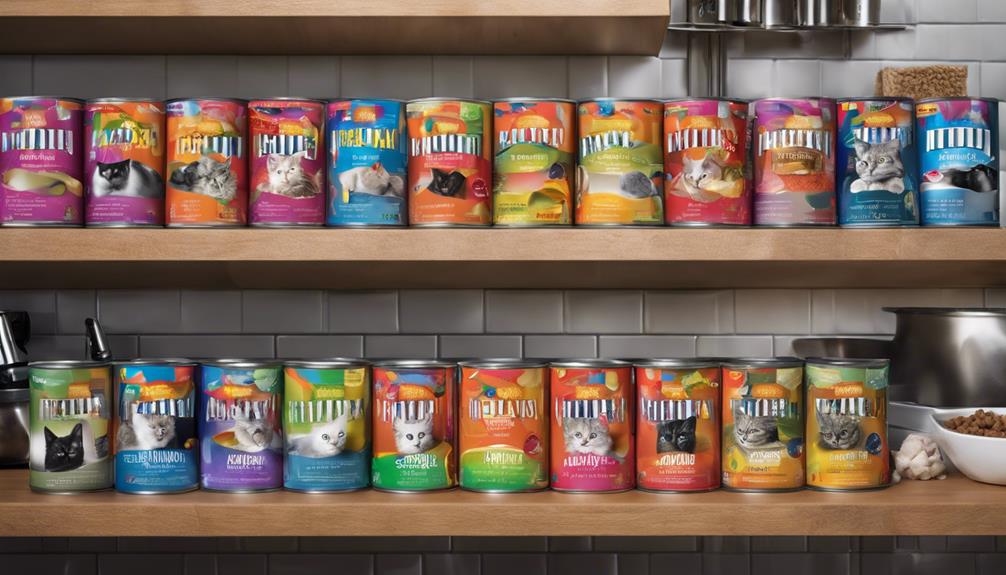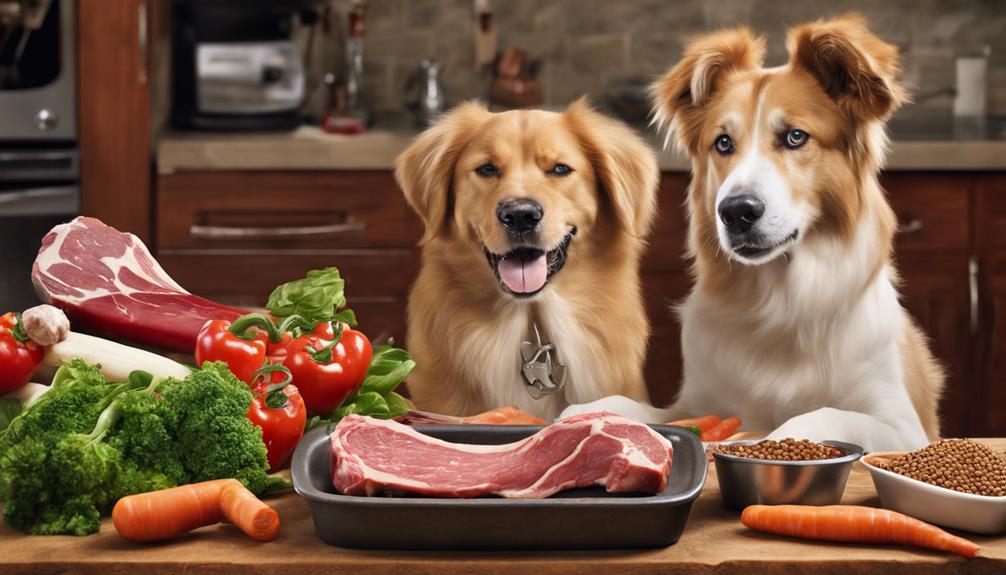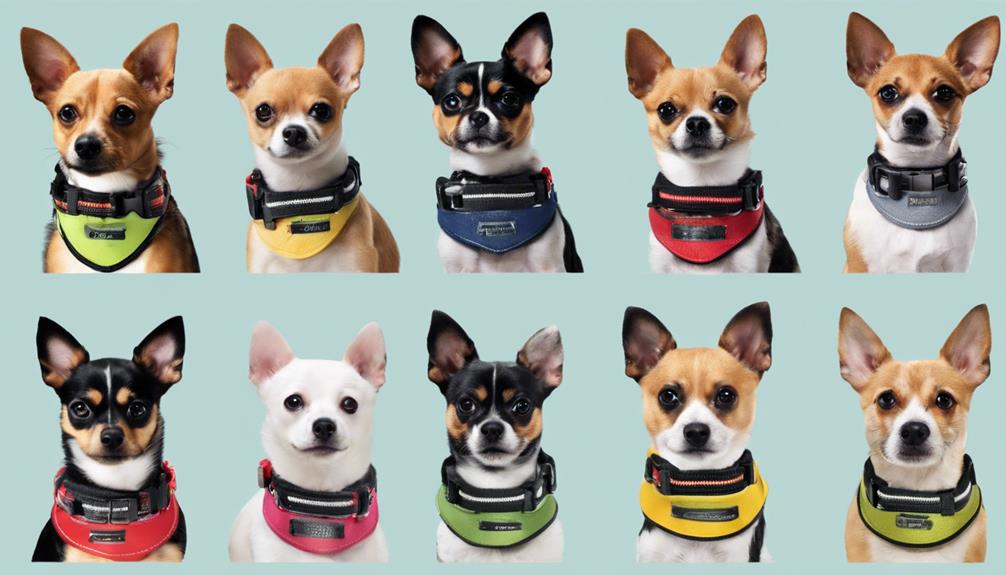Mastering dog crate training in 7 steps can significantly improve your pup’s behavior. Begin by leaving the crate door open and using familiar toys for acclimation. Next, select an appropriate crate based on size and durability. Creating positive associations with treats and toys is essential, as well as rewarding calm crate behavior gradually.
Increase crate time slowly, close the crate door gently, then build up duration with positive reinforcement. These steps guarantee a smooth shift to crate living for your furry friend, setting a foundation for lasting success!
Key Takeaways
- Start with crate introduction and acclimation techniques.
- Choose the right crate size and material for comfort.
- Create positive associations with the crate using treats and toys.
- Gradually increase crate time with positive reinforcement.
- Monitor behavior and adjust training schedule accordingly.
Crate Introduction and Acclimation
Gradually introducing your puppy to the crate by leaving the door open and placing familiar toys or blankets inside is the first step towards successful crate training. It's vital to create a positive association with the crate from the beginning. Encourage your puppy to explore the crate voluntarily, without any pressure or force. Using treats and positive reinforcement can help make the experience enjoyable for your furry friend. Allow your puppy to enter and exit the crate freely to build comfort and familiarity. This process helps them see the crate as a safe and inviting space.
Monitoring your puppy's body language and behavior is critical during this phase. Look for signs of relaxation and ease to make sure they're adapting well to the crate. Remember, every dog is different, so progress may vary. Be patient and consistent in your approach. Creating a structured training schedule that includes gradual crate introduction will establish a strong foundation for successful crate training in the future.
Choosing the Right Crate

When picking a crate for your dog, it's vital to take into account their size for sufficient room to move comfortably. Guarantee durability by selecting a crate made of robust materials like metal or plastic.
Keep in mind to use a divider for puppies to adjust space as they grow and keep accidents at bay.
Crate Size Matters
When choosing the right crate for your dog, it's essential to select a size that allows them to stand up, turn around, and lie down comfortably. Consider the adult size of the dog to avoid frequent replacements. Avoid a crate that's too large, as it may encourage bathroom accidents inside. Use a crate divider for puppies to adjust the space as they grow.
- Choose a crate that allows the dog to stand up, turn around, and lie down comfortably.
- Consider the adult size of the dog when selecting the crate to avoid frequent replacements.
- Avoid selecting a crate that's too large, as it may encourage bathroom accidents inside.
- Use a crate divider for puppies to adjust the space as they grow.
Material Quality Checklist
When selecting a crate for your dog, ensuring durability and ease of maintenance by opting for a material like metal or plastic is essential. Metal crates offer sturdiness and security, while plastic crates are lightweight and easy to clean. Here is a checklist to help you choose the right crate material:
| Criteria | Metal | Plastic |
|---|---|---|
| Durability | ✔️ | ✔️ |
| Secure Locks | ✔️ | ✔️ |
| Well-Ventilated | Sometimes | ✔️ |
Choosing a well-ventilated crate with secure locks will provide your dog with a safe and comfortable space. Remember to take into account the size, portability, and collapsibility of the crate to meet your specific needs.
Creating Positive Associations
To establish positive associations with the crate, incorporate high-value treats and your puppy's favorite toys or blankets inside to make it a cozy and inviting space. This will help your puppy view the crate as a safe haven and a place for enjoyable activities. Here are some tips to establish positive associations with the crate:
- Use high-value treats: Small pieces of chicken or cheese can work wonders in creating a positive connection with the crate.
- Incorporate favorite toys: Including your puppy's beloved toys inside the crate can make it a more appealing environment.
- Add blankets for comfort: Soft blankets can make the crate a cozy and snug space for your puppy to relax.
- Make it a safe space: Ensure the crate is always associated with positivity and never punishment to maintain a sense of security.
Rewarding Crate Time

Establishing positive associations with the crate is essential in ensuring your puppy sees it as a rewarding and comforting space to spend time in. When it comes to rewarding crate time, using high-value treats like small pieces of cooked chicken or cheese can be highly effective.
Rewarding calm behavior inside the crate reinforces positive associations and encourages your puppy to view the crate as a safe haven. Additionally, offering interactive toys or puzzle feeders during crate time can keep your puppy engaged and entertained, making the experience more enjoyable. To prevent boredom, rotate different types of treats to keep your puppy motivated during crate training sessions.
Consistent rewards for entering and staying in the crate help create a positive and pleasant association with the crate, ultimately leading to an enjoyable crate experience for your puppy. By incorporating these strategies into your crate training routine, you can make crate time a positive and rewarding part of your puppy's day.
Increasing Crate Time Gradually

Gradually increasing the time your puppy spends in the crate helps them acclimate comfortably to longer periods of confinement. To guarantee successful crate training, follow these key steps:
- Monitor Behavior: Pay close attention to your puppy's behavior and comfort level during crate time to make certain a positive experience.
- Gradually Increase Time: Start with short crate sessions of 10-15 minutes and aim to extend them by 5-10 minutes each day to help your puppy adjust gradually.
- Treats and Rewards: Use treats and rewards to reinforce calm behavior and create a positive association with longer crate stays.
- Consistent Schedule: Keep a consistent schedule for crate training to establish a routine and build your puppy's confidence in the crate.
Closing the Crate Door

As your puppy adjusts to spending time in the crate, the next step is gently introducing the practice of closing the crate door for short intervals while you observe their response.
Begin by closing the crate door for a few seconds, then gradually increase the duration as your puppy becomes more comfortable. Use treats and positive reinforcement to create a positive association with the closed crate door.
It's crucial to monitor your puppy's behavior closely for any signs of distress or anxiety when the door is closed. Avoid rushing the process; let your puppy adapt to being in the crate with the door closed at their own pace.
Remember, the goal is for your puppy to feel comfortable and secure in the crate with the door closed. If you notice any signs of distress, take a step back and allow your puppy more time to adjust.
Patience and consistency are key as your puppy learns to feel at ease in the crate with the door shut.
Building Duration in the Crate

To help your puppy adjust to spending time in the crate, start by gradually increasing the duration of crate time from short periods to longer stays. Here are some key points to bear in mind when building duration in the crate:
- Monitor Behavior: Keep a close eye on your puppy's behavior for any signs of stress or discomfort as you extend the time they spend in the crate.
- Use Positive Reinforcement: Encourage calm behavior and longer stays in the crate by rewarding your puppy with treats, praise, or toys when they exhibit the desired behavior.
- Training Sessions: Make crate training a part of your regular training sessions to help your puppy become more comfortable with the adjustment process.
- Adjustment Process: If your puppy displays signs of anxiety or distress, slow down the process and provide extra support to help them feel more at ease in their confined training space.
Frequently Asked Questions
What Is a Good Crate Training Schedule?
A good crate training schedule involves gradually increasing crate time, incorporating potty breaks, exercise, and feeding sessions for positive associations. Consistency and adjustments based on age and needs are vital for success.
How Do You Crate Train Step by Step?
We introduce the crate gradually, placing it centrally with familiar items. Encourage entry with treats and a verbal cue. Start feeding near the crate and progress to inside. Practice short sessions, adjusting based on comfort.
How Do You Crate Train a Dog in 7 Days?
We introduce the crate gradually, using treats and toys for positive association. We start with short periods and increase slowly over 7 days. Consistent schedule for feeding, potty breaks, and crate time is key.
How Many Hours a Day Should I Crate Train My Dog?
We should crate train our dog for a maximum of 2 hours during the day and 8 hours at night for puppies, and 4-6 hours during the day and 8-10 hours at night for adult dogs. Adjust based on age, control, and comfort.
What Are the Key Steps in Dog Crate Training Schedule?
When creating an effective puppy crate training schedule, consistency is key. Start by gradually introducing your dog to the crate, then associate it with positive experiences. Once your pup is comfortable, begin leaving them in the crate for short periods, gradually extending the time as they become more relaxed and at ease.
Conclusion
As you journey through crate training with your dog, remember that the crate is like a cocoon – a safe and comforting space for your furry friend to grow and flourish.
With patience, consistency, and love, you can help your dog master crate training in no time.
Trust the process, celebrate the small victories, and watch as your bond with your pup strengthens through this transformative experience.
Happy training!










